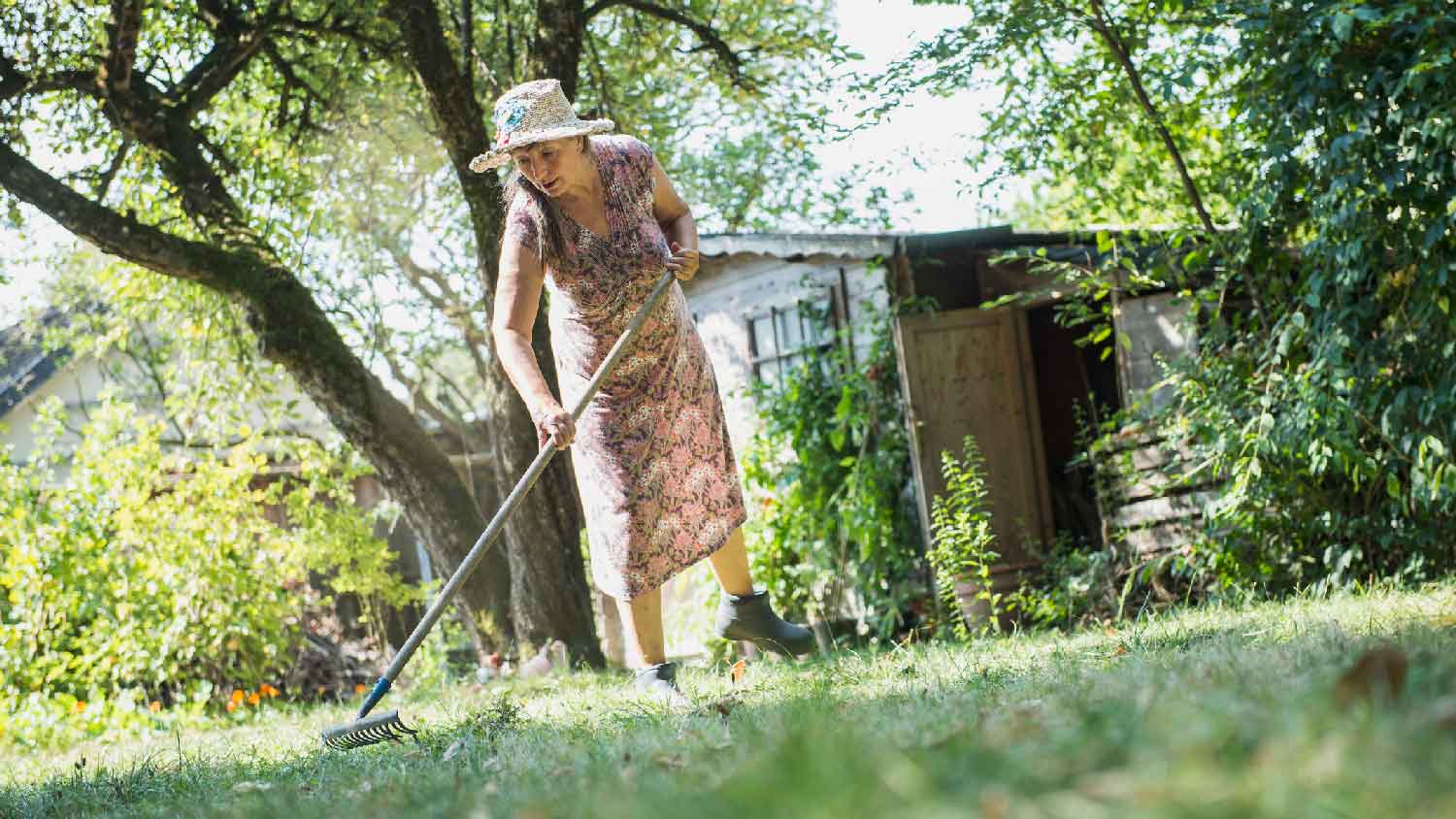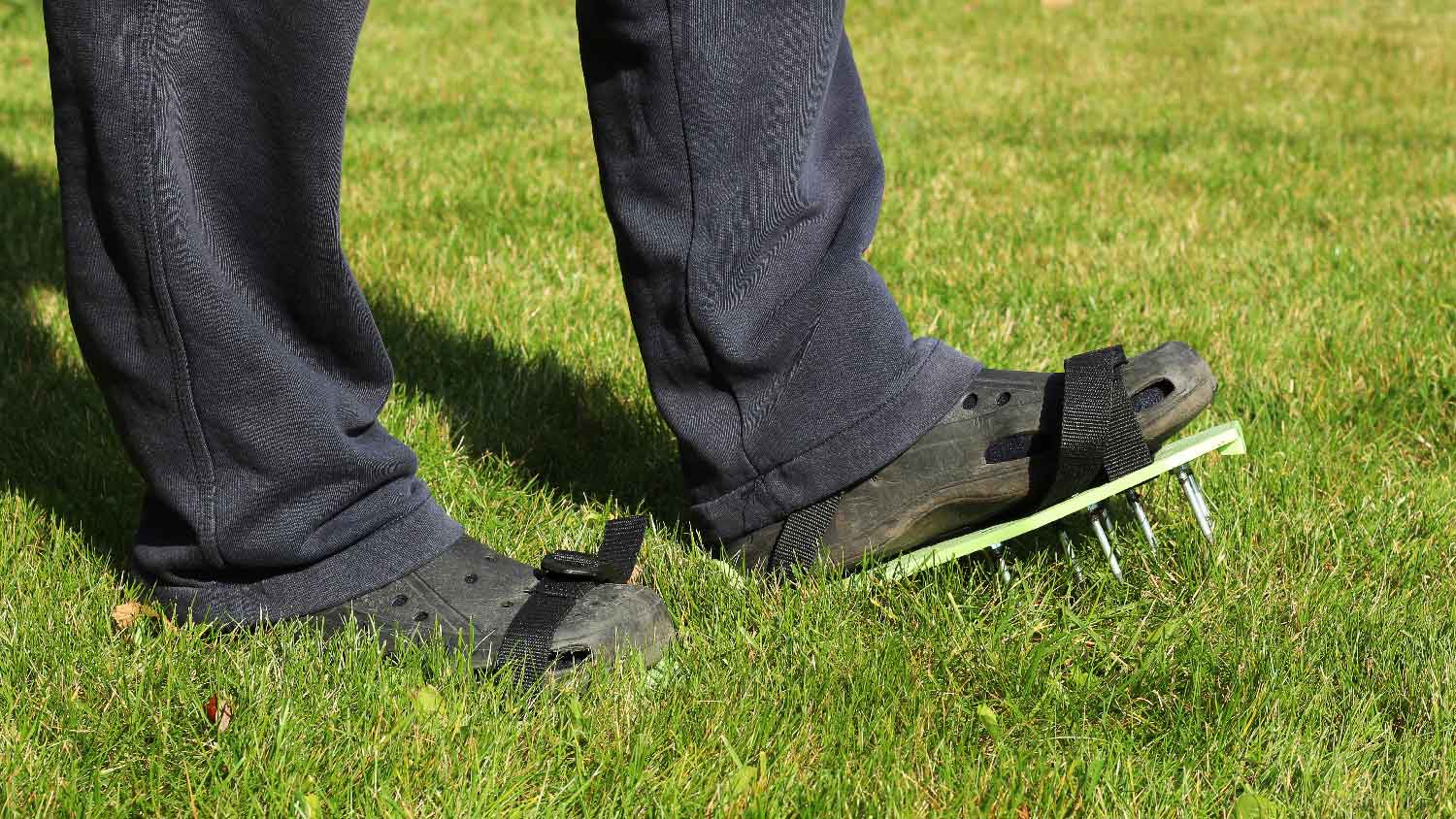
Your total lawn care cost depends on several factors, including the type of service and lawn size. Our guide will cover what you can expect to pay for lawn care.
Gotta dethatch ‘em all!


No matter what time of year is best, dethatching first makes aeration faster and easier.
You need to determine whether your lawn needs both dethatching and aeration or aeration alone.
Cool-season grasses should be dethatched and aerated in March or April or in September or October.
Warm-season grasses should be dethatched and aerated in May or June.
If it seems like your lawn just isn’t growing as much as it normally would, compacted soil is usually the culprit. If you already know a bit about lawn care, you may already be setting your sights on dethatching and aerating your yard. But should you dethatch or aerate first? Let’s get into why you want to dethatch before aeration and when you should plan to do it.
What’s the difference between dethatching your lawn and lawn aeration? And why does it make a difference whether you dethatch or aerate first? Both aim to make hungry, thirsty soil able to nourish itself, although they go about it differently. Learning the intent and purpose for each sheds light on why you should dethatch before you aerate.
Thatch is a bioactive layer of your lawn. Lawn thatch has both living and dead material, including grass, stems, roots, and other plant matter between the surface and inner workings of the soil. It's a vital and natural layer of protection for your lawn. But when the thatch gets too thick, just under 3/4 inch, it can create poor drainage and compact the soil. It needs dethatching, which is when you use a rake or verticutter to thin out the thatch so that the soil can get the oxygen, nutrients, and water that it needs to turn into a lush lawn.
Lawn aeration is a different process that uses a core aerator or spikes to loosen up compacted soil so that it can properly nourish itself. An aerator will literally poke holes or pull plugs from the ground in order to give the soil more breathing room. This also gives your grass’s roots a better opportunity to access the nutrients that would otherwise sit on top of the soil and not soak in as well.
If you have dead patches in your yard, you may need to aerate those sections again to penetrate deeper. But never aerate your lawn more than two times.

Should you aerate or detach first? Dethatching always needs to come before aeration. Why? Imagine taking a pair of scissors and cutting up a T-shirt versus trying to do the same to a leather belt. Unless those are some extremely sharp scissors, you'll need to put a lot of elbow grease into cutting the belt, but the T-shirt is likely to slice quite easily. The T-shirt is your ground without a layer of thatch, and the belt is your ground with a layer of thatch.
The aeration process won't be as intense if the thatch has already been cut down. If the thatch is too thick, it not only poses risks like attracting pests and further compacting the soil, but it also makes aeration much harder.
However, you don’t need to dethatch a lawn solely because your aeration schedule date is approaching. If the thatch isn’t so thick that you practically need a forklift, the soil should be able to aerate without much difficulty. You only need to dethatch the lawn if it’s growing out of control, and it should definitely be done before aerating the soil.

Depending on where you live, it can be tricky figuring out the best time of year to dethatch or aerate your lawn. Most of the northern United States, like the northeast corridor and the Rockies, has cool-season grass, such as Kentucky bluegrass and fine fescues. The states farthest to the south, like Texas, Louisiana, and Florida, have warm-season grasses, like Bermudagrass, Buffalograss, and carpetgrass.
If you live in the transition zone that spans the continental US like a belt all the way from southern California to the Carolinas, both cool-season and warm-season grasses can be found in your area.
If you're unsure what type of grass you have, especially if you live in the transition zone, a local lawn aeration service can help you identify it and determine whether you need dethatching, aeration, or both.
You'll want to dethatch your lawn when the soil is somewhat moist and the grass is growing. Aeration should take place during the peak growth period for your grass type. While dethatching depends on the time of year and how thick it's grown, aeration needs to be regularly scheduled. For most people, aeration can be done once a year, but you may need it done more often or less often, depending on your yard’s soil type, condition, and foot traffic.
If you live in the north and have cool-season grasses like perennial ryegrass and fescues, dethatch in the early spring or early fall (March to April and September to October, respectively). Peak grass-growing season is late spring and early summer, and you want to dethatch while the grass is rapidly growing and the soil is wetter from springtime showers. You have another chance to do this in the fall so that winter sets in and kills excess thatch growth before it can get too thick.
Cool-season lawns should be aerated during the peak grass-growing season, late spring to early summer (May to June). You can also get that last-minute aeration in by early fall, but late spring to early summer is the best time.
If you live in the deep south or southwest and have warm-season grasses like Bermudagrass and St. Augustine grass, dethatch in the late spring or early summer (May to June). This is when warm-season grasses grow the quickest right before the peak hits.
Aeration for warm-season grasses can take place during this time window, too, since peak growth strikes around June to July.
From average costs to expert advice, get all the answers you need to get your job done.

Your total lawn care cost depends on several factors, including the type of service and lawn size. Our guide will cover what you can expect to pay for lawn care.

How much it costs to rent a lawn aerator depends on what kind you rent and how long you rent it for. Read on for the full details.

Removing an old lawn is often necessary to plant new grass or build a new outdoor structure. Find out what to budget for your lawn removal cost.

Learn how to remove yard waste properly and efficiently with these methods.

Does sugar help your lawn? In some cases, yes. Keep reading to learn how you can use this sweet treat to kill weeds and keep the grass green.

A sandy soil composition brings a unique set of challenges to your lawn. Choose a grass for sandy soil that's ready to adapt to your area's climate no matter the weather.